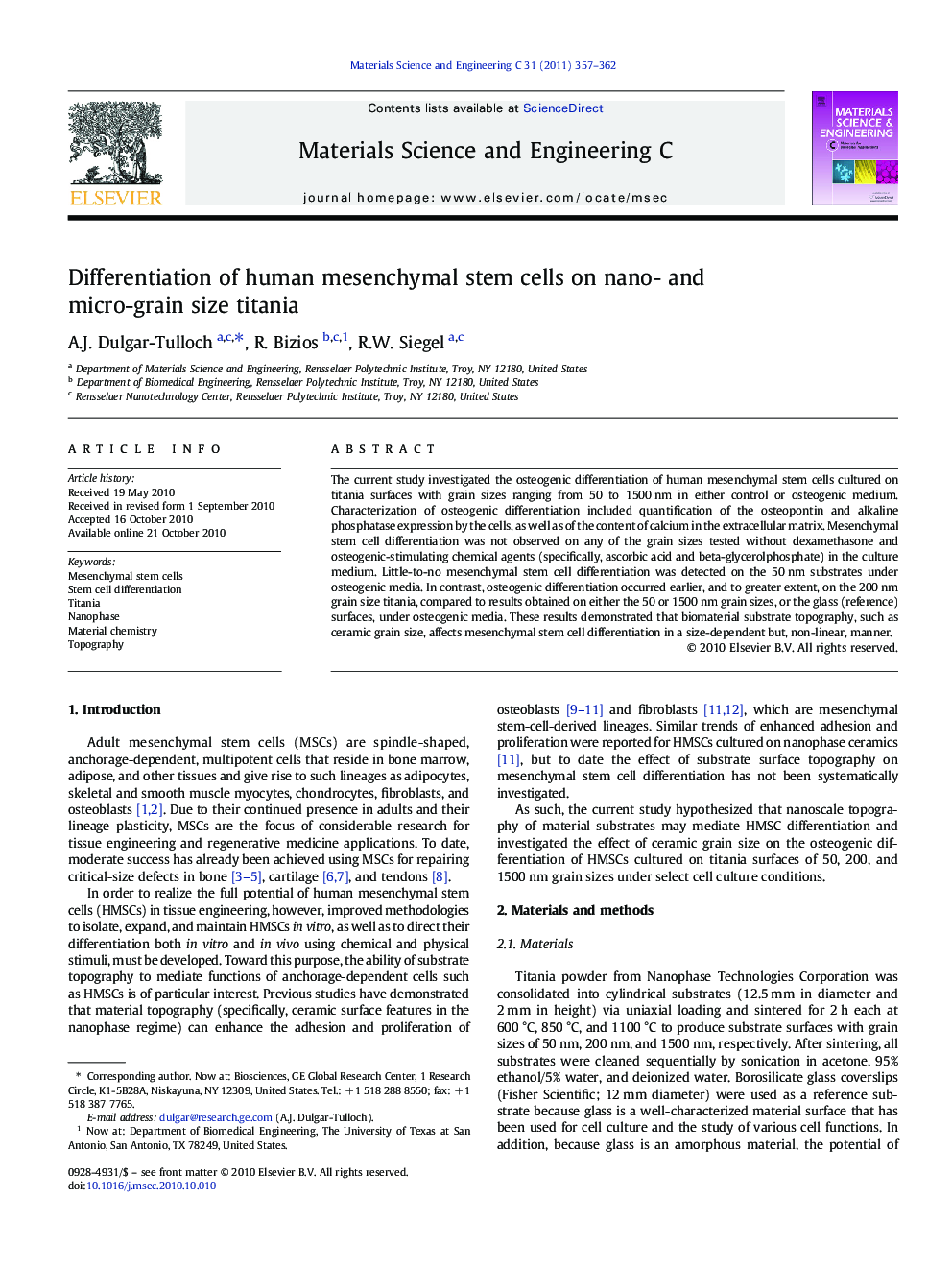| Article ID | Journal | Published Year | Pages | File Type |
|---|---|---|---|---|
| 10614791 | Materials Science and Engineering: C | 2011 | 6 Pages |
Abstract
The current study investigated the osteogenic differentiation of human mesenchymal stem cells cultured on titania surfaces with grain sizes ranging from 50 to 1500Â nm in either control or osteogenic medium. Characterization of osteogenic differentiation included quantification of the osteopontin and alkaline phosphatase expression by the cells, as well as of the content of calcium in the extracellular matrix. Mesenchymal stem cell differentiation was not observed on any of the grain sizes tested without dexamethasone and osteogenic-stimulating chemical agents (specifically, ascorbic acid and beta-glycerolphosphate) in the culture medium. Little-to-no mesenchymal stem cell differentiation was detected on the 50Â nm substrates under osteogenic media. In contrast, osteogenic differentiation occurred earlier, and to greater extent, on the 200Â nm grain size titania, compared to results obtained on either the 50 or 1500Â nm grain sizes, or the glass (reference) surfaces, under osteogenic media. These results demonstrated that biomaterial substrate topography, such as ceramic grain size, affects mesenchymal stem cell differentiation in a size-dependent but, non-linear, manner.
Keywords
Related Topics
Physical Sciences and Engineering
Materials Science
Biomaterials
Authors
A.J. Dulgar-Tulloch, R. Bizios, R.W. Siegel,
